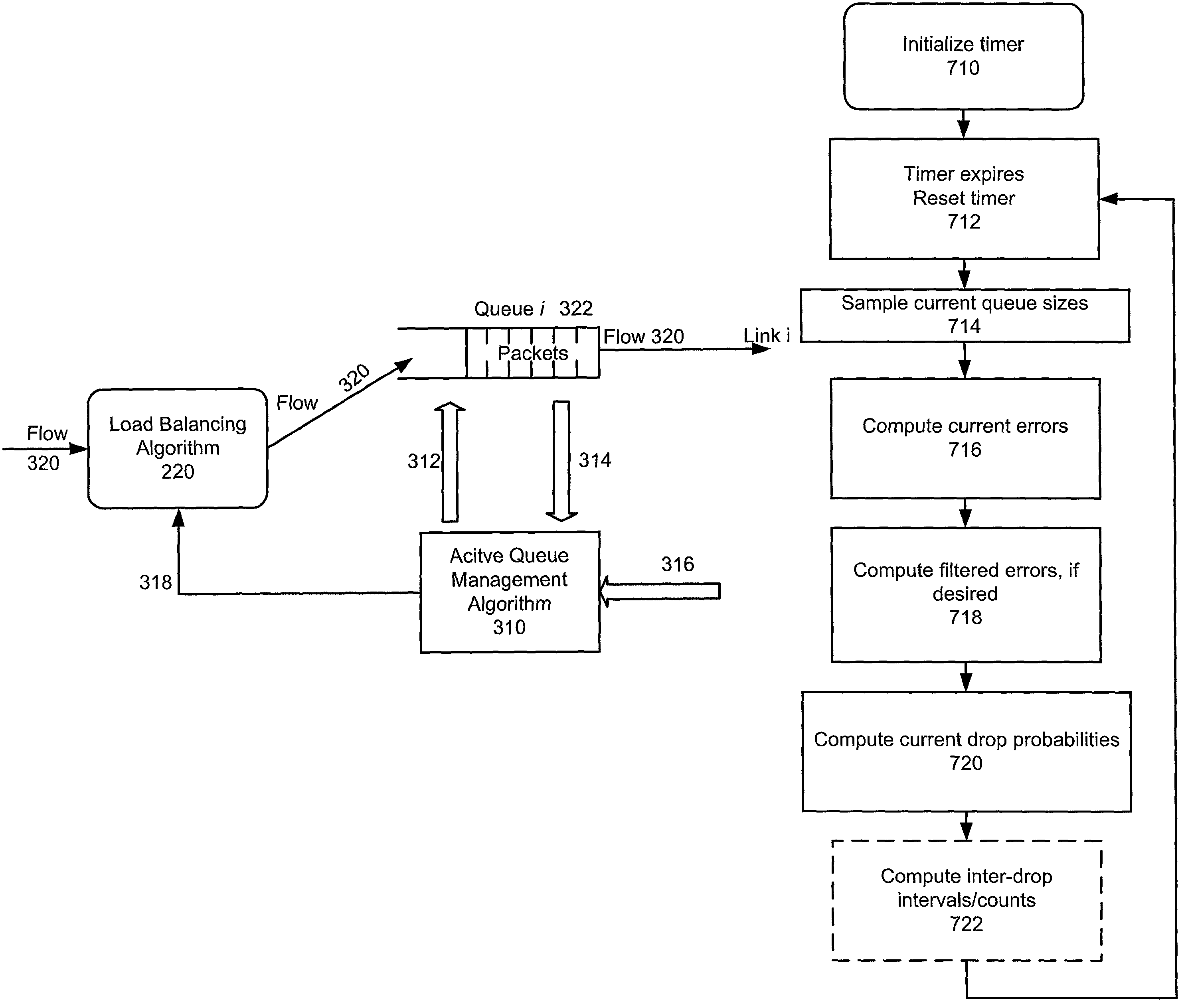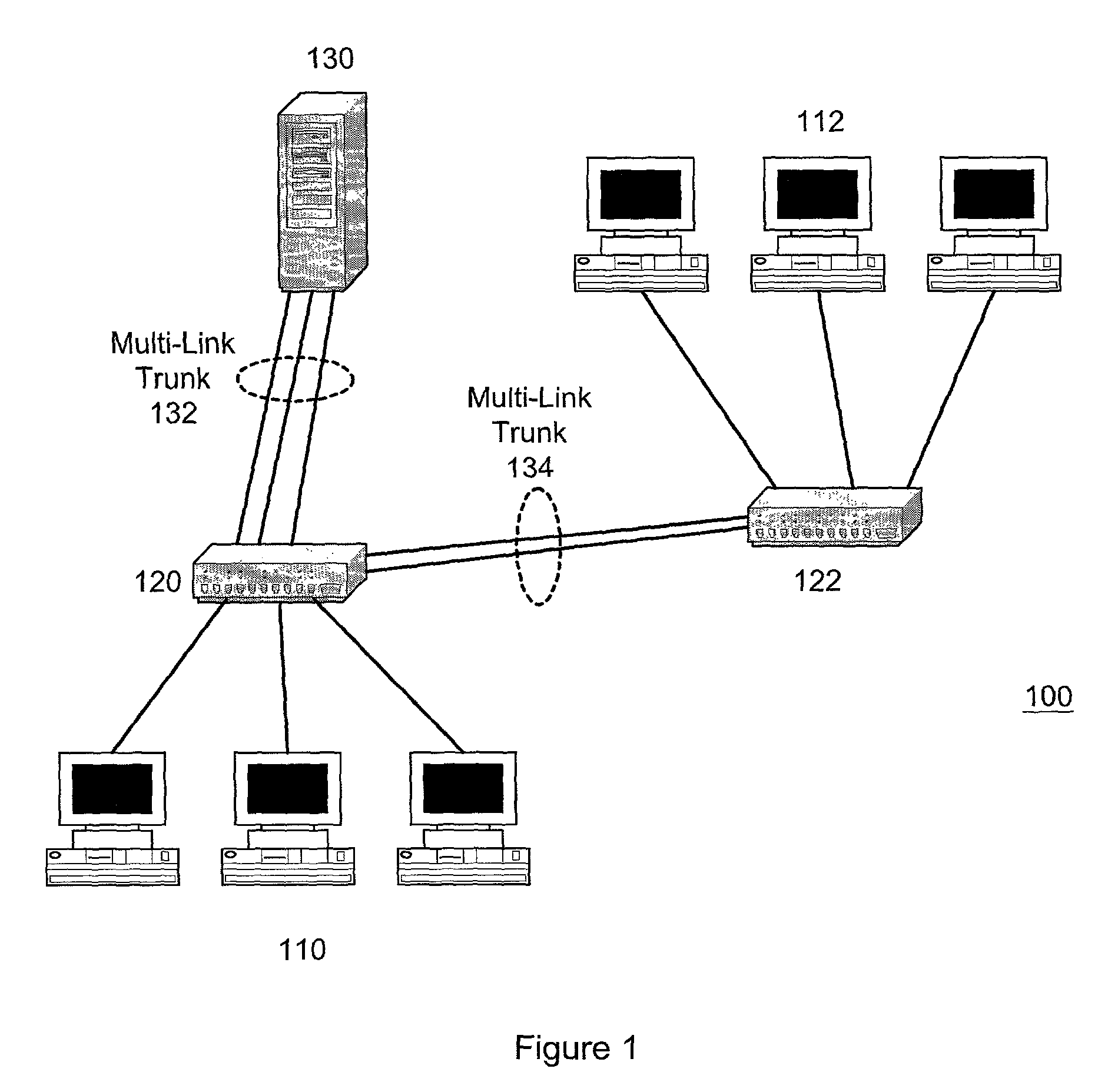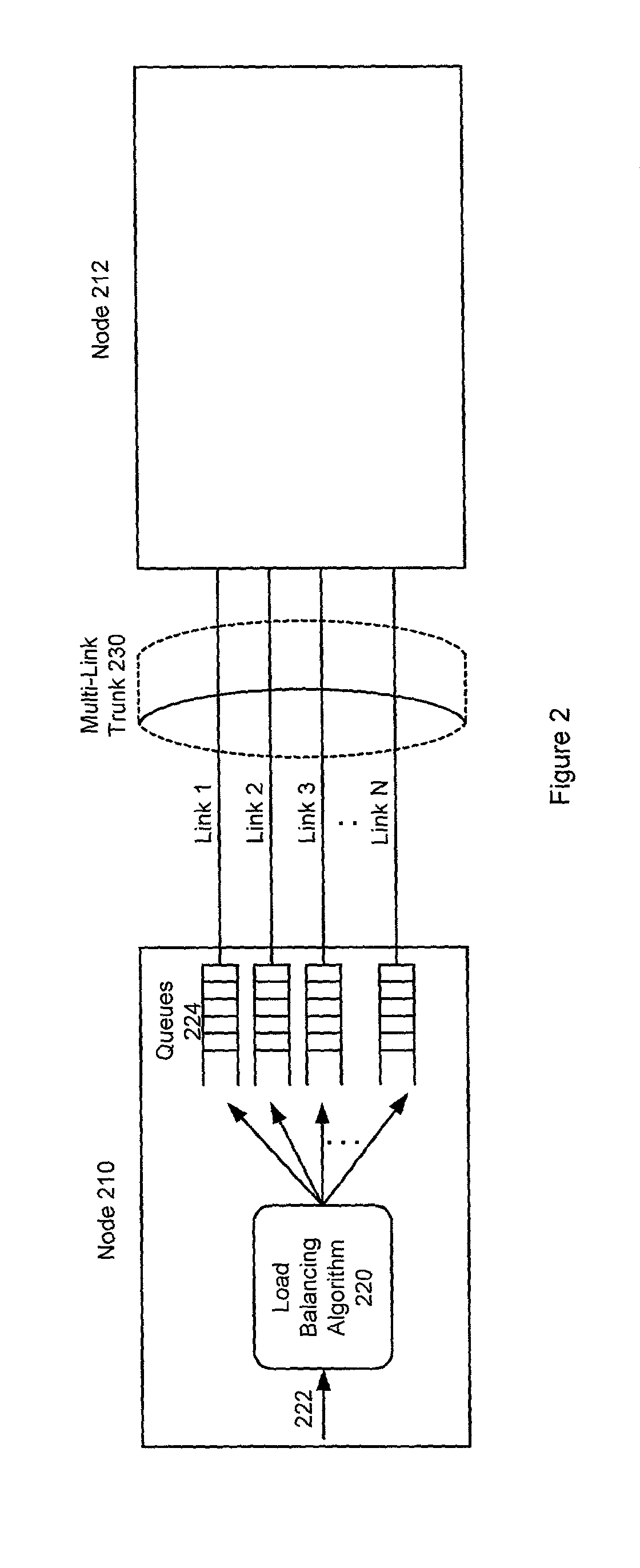Technique for adaptively load balancing connections in multi-link trunks
a load balancing and trunk technology, applied in the direction of frequency-division multiplex, instruments, high-level techniques, etc., can solve the problems of inability to provide fair bandwidth allocation, inability to distribute and balance traffic, and current load balancing solutions with a number of limitations
- Summary
- Abstract
- Description
- Claims
- Application Information
AI Technical Summary
Benefits of technology
Problems solved by technology
Method used
Image
Examples
Embodiment Construction
)
[0034]The present invention provides a load balancing algorithm for multi-link trunks. Multi-link trunking involves a technology that allows multiple physical links to be bundled together and be treated as a single logical link. The technology provides various advantages, such as incremental bandwidth, simple migration strategy, low cost, low complexity, and extension life of older equipment. For example, multi-link trunking allows parallel physical links between switches or between a switch and a server to be used simultaneously, multiplying the bandwidth between the devices.
[0035]The load balancing algorithm of the present invention may implement relative link quality metrics (e.g., the short-term averages of the observed packet drop rate for each of the member links in a bundle) to adjust the traffic distribution among links. The present invention further dynamically adjusts the number of flows on each link in proportion to relative data carrying capacity. The algorithm of the p...
PUM
 Login to View More
Login to View More Abstract
Description
Claims
Application Information
 Login to View More
Login to View More - R&D
- Intellectual Property
- Life Sciences
- Materials
- Tech Scout
- Unparalleled Data Quality
- Higher Quality Content
- 60% Fewer Hallucinations
Browse by: Latest US Patents, China's latest patents, Technical Efficacy Thesaurus, Application Domain, Technology Topic, Popular Technical Reports.
© 2025 PatSnap. All rights reserved.Legal|Privacy policy|Modern Slavery Act Transparency Statement|Sitemap|About US| Contact US: help@patsnap.com



